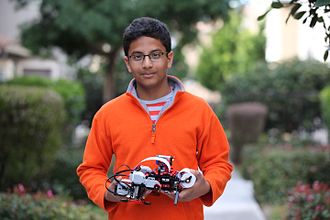Shubham Banerjee is a 13 year old who has completely innovated the world for the blind. Before Banerjee brought his idea to market, there had not been an affordable printer for the blind. Braille printers ran for over $2,000, which is in the budget for most of the 1.3 million blind people in the United States.
Banerjee was searching for an idea for his science fair when he came across this fact. This gave him the idea to try to create a low cost braille printer.
He was trying to engineer this device, which took him seven attempts exactly, but he finally got a working prototype. He made a working device using some Legos and some electrical wiring. He got the device to print out six dots of Braille.
After getting this to work, Banerjee was obsessed with his new project. He stayed up for hours on end with his engineer dad right beside him.
Now, as a freshman in high school, Banerjee is the inventor of Braigo, a low cost Braille printer. It looks like any other printer, except it prints our raised bumps instead of flat letters. Benerjee was able to do something that so many companies were trying to do for so long. But sometimes all you need is a young, creative mind seeing the problem and solution in a different way.






 “Anti-Silicon Valley” startup named Uncharted Power. Using her intellectual property rights to kinetic energy products Matthews used her initial capital to expand her toy product line. But she realized something bigger could come of her inventions. After unveiling her new power-generating products, Matthews told Forbes that she has been in communication with Disney to develop full-scale energy production in “light poverty” areas.
“Anti-Silicon Valley” startup named Uncharted Power. Using her intellectual property rights to kinetic energy products Matthews used her initial capital to expand her toy product line. But she realized something bigger could come of her inventions. After unveiling her new power-generating products, Matthews told Forbes that she has been in communication with Disney to develop full-scale energy production in “light poverty” areas.



